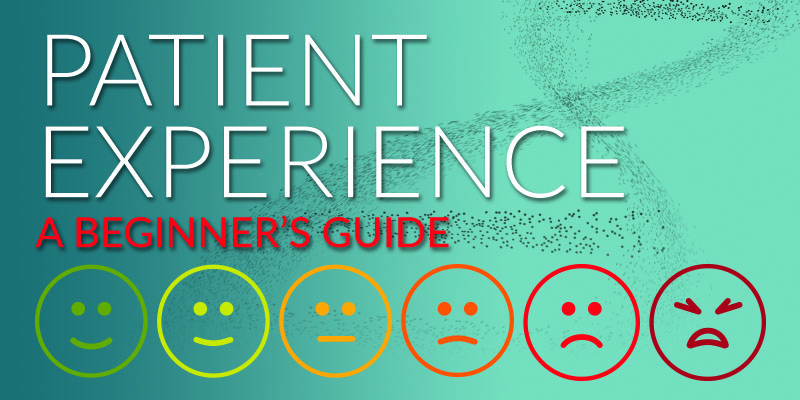Running a healthcare business can be complex, with many moving pieces to consider. You need to ensure you always follow regulations, provide excellent care, and handle the costs of daily operations. However, it’s important to remember that every aspect of your healthcare organization is connected to and impacted by one central concept: the patient experience.
What is Patient Experience?
Patient experience is at the core of your healthcare brand and the service you provide. It is essential for offering quality care and making patients happy through positive experiences. The patient experience isn’t as simple as having courteous staff or a comfortable waiting room. While those are important, improving patient experience needs to encompass everything from your website to the billing process.
Each interaction a patient has with a care provider, whether it’s in an examination room or on your website, contributes to the patient’s experience and their opinion of their provider. Therefore, every aspect of a provider’s business should reflect the goal of creating a positive patient experience.
Can the Patient Experience be Improved?
Creating a negative experience for patients is, of course, not the goal of any healthcare provider. Typically, any kind of negative experience is due at least in part to the lack of a thoughtful patient experience strategy. Unfortunately, while these negative experiences may be unintentional, they still have very real adverse impacts for both patients and providers.
Through gathering data and conducting research, our team at PatientX has identified four areas of common complaints amongst patients:
1: LONG WAIT TIMES
Understandably, patients want to feel like their time is being valued. It should come as no surprise, therefore, that one of the most common patient complaints deals with waiting times. Healthcare providers can make patients feel like their time is important by implementing a few strategies to cut down on that amount of time.
- First, wait times can be cut down by gathering a patient’s necessary information before they show up for their appointment, as doing so reduces time wasted filling out forms.
- Time can also be saved by using mobile queue technologies. Having such systems in place lets patients confirm their appointments and check-in more quickly. Mobile queue technologies can also be used to communicate how long they can expect to wait, or notify them if their appointment has been changed.
- The third and, perhaps, most important way to reduce wait times is to make timeliness part of your healthcare team’s culture. Your entire team should be focused on finding ways to be more efficient in their work. That way solutions can be implemented that better serve your patients by respecting their time.
2: FEELING MISUNDERSTOOD & UNHEARD
The second common patient complaint is feeling misunderstood and unheard. Just as they want their time to be valued by their care providers, patients want to feel respected and understood. Misunderstanding patients is not conducive to providing quality care, so providers should practice active listening skills.
Physicians, as well as all other staff members of a healthcare facility, should be encouraged to:
- Look patients in the eye when they’re talking.
- Use affirmatory body language.
- Respond with phrases like, “so what I hear you saying,” or something that reiterates what the patient has said, even at times repeating a portion of what they just said.
Healthcare providers should also show empathy, especially during examinations. Patients are more likely to feel understood if their physician engages with them on an emotional level, which can be as simple as affirming patients’ struggles.
3: LACK OF RESOURCES
Most care providers do not lack resources and materials to provide to patients. And yet, in some cases, patients don’t receive the right resources.
This occurs when there’s a disconnect between what patients are saying and what providers are hearing. If patients’ needs are not understood, they won’t be given the right resources they need.
Solutions for this common complaint are also tied to listening and understanding what patients are struggling with. If providers understand their patients’ issues, they’ll be able to offer the right resources, which will make patients feel even more understood and cared for.
Highlighting information patients should pay attention to in healthcare resources will reiterate providers’ expertise and give guidance to patients. Healthcare providers can go above and beyond by creating their own resources such as blogs or brochures (or they can hire a team like PatientX to help them do it).
4: BILLING
The fourth most common patient complaint pertains to billing. Patients are regularly confused by the bills they receive for their care. This is unsurprising, as insurance and the financials of the healthcare industry are generally a confusing web of legalistic fine print.
Here’s how you can improve the patient experience around billing:
- Patients want their bills to be simple, so billing should always use clear communication and be easy to understand. Rather than sending multiple bills with confusing language, send one bill that simply and clearly communicates what they need to know.
- Communicating with patients before their appointment about what costs to expect is also important.
- Make it easy for patients to pay their bills. Offer several ways for patients to pay their bill, and list those options clearly for them on their statement.
Similar Solutions for a Great Patient Experience
It should be encouraging for healthcare providers that the four most common patient complaints can be remedied through a variety of similar solutions. Practicing clearer, more effective communication can make patients feel understood, and it can make operations more efficient, since mistakes and mishaps are often avoided through better communication.
Looking for help with other patient touch points like websites, billboards, social media, print, and more? At PatientX we specialize in healthcare marketing – let us see how we can help!
Originally published Published on: Feb 12, 2019, updated May 2023

